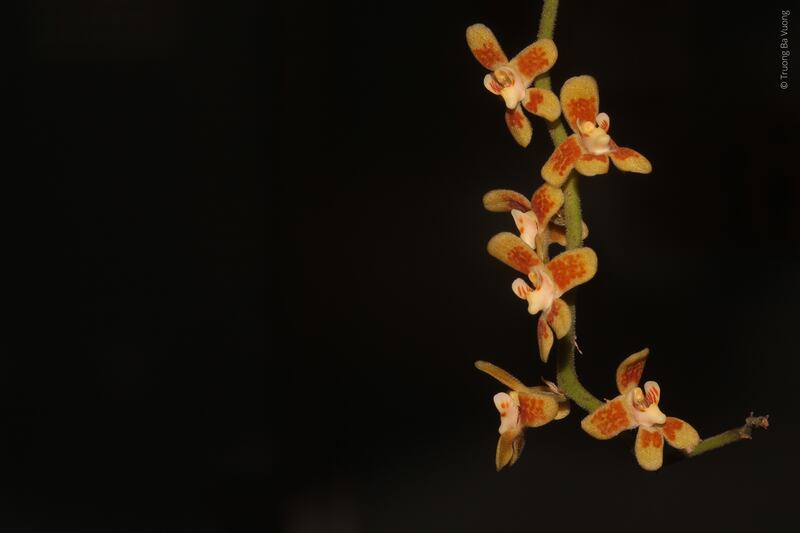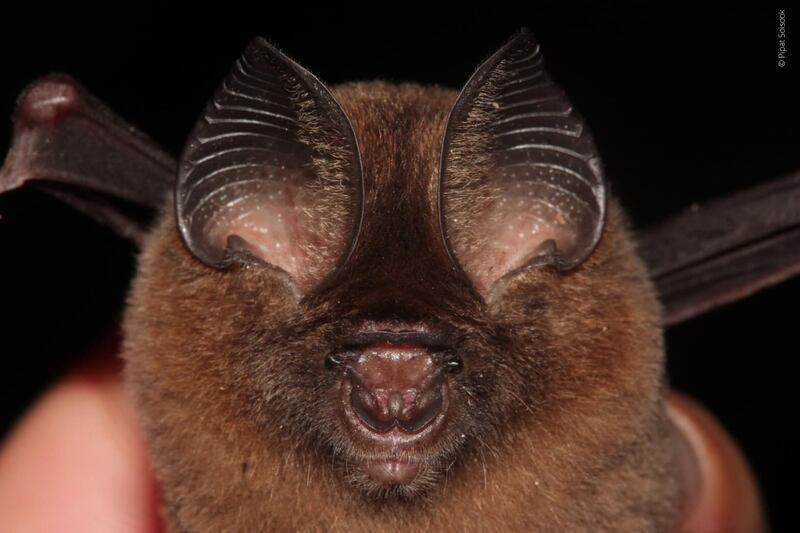BANGKOK – An eight-gram “shrew mole” that’s one of the tiniest mammals on earth and a fanged furry hedgehog are among the more than 200 animal and plant species newly discovered in Southeast Asia’s Mekong River region.
The discoveries covering Vietnam, Myanmar, Cambodia, Laos and Thailand highlight the region’s rich flora and fauna, researchers say, and the importance of conserving it in the face of threats from the wildlife trade and unfettered development such as industrial agriculture, mass tourism and hydropower dams.
Scientific recognition of some of the species is the result of fieldwork in remote locations and analysis including genomic studies while one of the mammals identified had gathered dust in museums for decades until identified by researchers.
The Greater Mekong chapter of World Wide Fund for Nature, or WWF, which collated the 234 discoveries, said they show that the region home to Southeast Asia’s longest river is still a fertile ground for scientific exploration and a global hotspot of species diversity.
“But they also remind us of what we stand to lose if unsustainable development activities continue to disregard the value of nature,” it said in a statement.
“Many species are likely to go extinct before they are even discovered, driven by habitat destruction, diseases spread by human activities, competition with invasive species and the devastating wildlife trade.”

The environmental group added that new species can be the key to discovering life-saving pharmaceuticals and genetic variation that could increase resilience to climate change.
The plants identified included a fern that grows underwater and a delicate leafless orchid only known to exist near one village in northern Vietnam.

The diminutive shrew mole, which is just 14 centimeters in length [5.5 inches] including a six centimeter tail, was discovered by scientists at nearly 3,000 meters [9,840 feet] above sea level on Mt. Fansipan in northwestern Vietnam.
It’s a member of the mole family but resembles a shrew with its long snout, thin tail and petite forefeet. Weighing in at eight grams [0.3 ounces], it ranks among the 10 smallest terrestrial mammals, WWF said.
Researchers said the Mt. Fansipan shrew mole is outwardly similar to shrew moles found in the southernmost Himalayas, but has significant genetic variations and differences in bone structure.
Isolation in a mountainous “sky island” is likely the reason it diverged from other shrew mole species, according to WWF’s report.
‘Many more’ may be discovered
In the mountains of northeastern Laos, sonographic analysis of mating calls helped identify a new species of bright grass-green tree frog.
Researchers, who dubbed the amphibian mountain jade, said the male’s distinctive “advertising call” consisting of clicking sounds and a series of notes, each exactly 0.28 seconds in duration, marked it out as a new species. That finding was backed up by morphological and molecular analysis.
“There are likely to be many more undescribed species in the region. The mountains of northern Laos, in particular, are a crucial centre for amphibian diversity with high rates of endemism, but are among the least studied areas in Asia,” the researchers said.

The discovery that Vietnam has a hitherto unknown species of fanged gymnure – furry members of the hedgehog family – partly occurred 8,300 miles away in the bowels of the Smithsonian National Museum of Natural History in Washington DC.
Specimens of the macarong – Vietnamese for vampire – had been in the Smithsonian since the 1960s, “highlighting the potential of mining museums for new species,” said Arlo Hinckley Boned, an expert on tropical East Asian mammals at the Smithsonian.
They were genetically compared to even older specimens held in museums in six countries and dating back to the 1930s.
Boned said identifying a new mammal species that has taken millions of years to evolve is something like the discovery of an unknown Picasso or an important archaeological site.
By chance, Russian and Vietnamese scientists had suspected that a macarong specimen they collected in southern Vietnam in 2009 was a new species.
“We found this distinct species in Vietnam more than 10 years ago, but we took too long to describe it and were too late,” said Alexei Abramov, from the Zoological Institute of the Russian Academy of Sciences.
WWF said the discoveries recognized in 2023 included 173 plants, 26 reptiles, 17 amphibians, 15 fish and three mammals. It brings the total number of species discovered in the Greater Mekong since the late 1990s to more than 3,600.

“Although these species were just described by science last year, they have been living in the unique habitats of our region for many millennia,” said Chris Hallam, a wildlife expert at WWF Asia Pacific.
“Each of these species is a critical piece of a functioning, healthy ecosystem and a jewel in the region’s rich natural heritage. And the researchers are equally as precious,” he said.
Edited by Taejun Kang.
